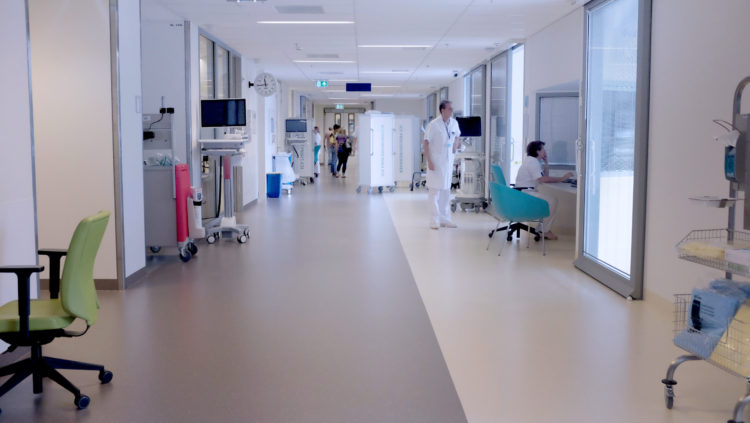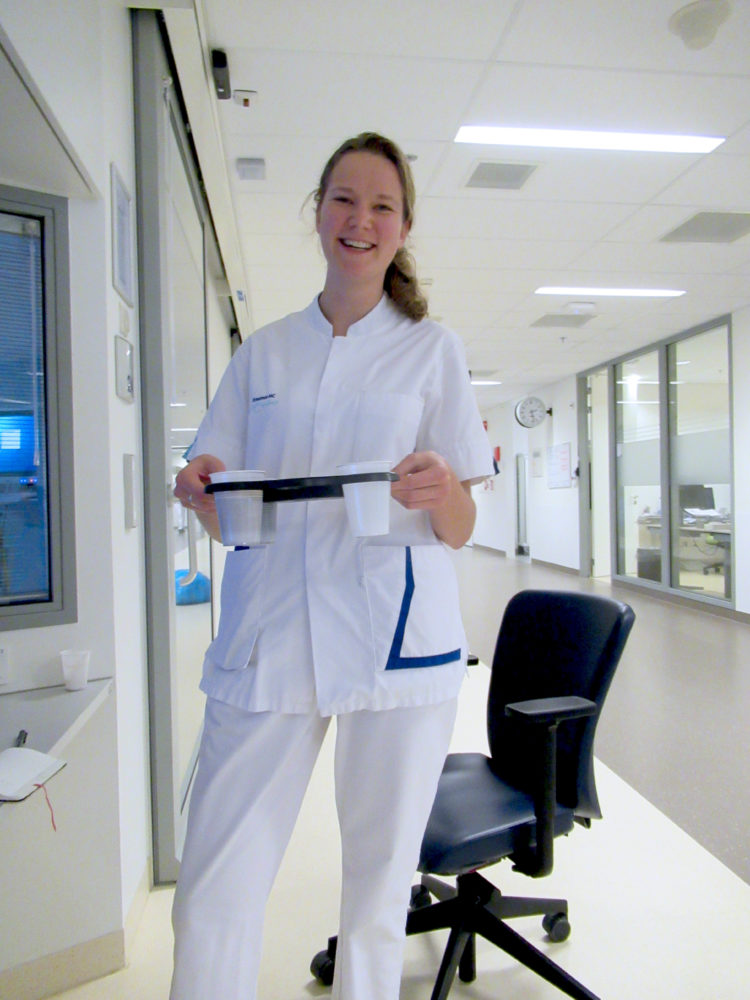Capturing sound cultures in the ICU
How does it feel and sound like to be an ICU nurse for a day? IDE graduate student Marije started working on her master thesis, beginning with immersing herself in the ICU.
When I entered Erasmus MC’s ICU for the first time, the serenity made me hold my breath for a moment. The clinical appearance exuded some sort of calmness. Bright sunlight was shining in my face. However, after being there for 5 minutes, I started to realize that a lot happened around me. Clinicians walked in and out the corridor and patient rooms, working together to care and cure the patients. A family member came out of a patient room to make a phone call with the home front. And every few minutes, I heard an alarm sound. The one sounded more urgent than the other; sometimes it was just a very small beep in the background. After 10 minutes, I realized I was standing in a dynamic environment with a vibrant soundscape, ironically.
I wasn’t the only one who was exposed to all these sounds of course. Clinicians, patients and family members have to deal with them every single day. The sounds have a different effect on everyone: it could encourage the nurse to take action, while intimidating patients and family members. This difference can be explained by the fact that people have their own perception of what is ‘good’ and ‘bad’ and how you have to act in certain situations. In other words: people’s own cultural background, but also that of the ICU, tells us something about the way in which clinicians, patients and family members behave and deal with all the sounds.
I was constantly looking for the right attitude. There was no instruction guide, showing me explitit rules about how to behave in the ICU. Can I just talk and laugh over here?
Marije
What to discover next?
Experiencing the ICU as an acoustically hostile environment is a worldwide problem. However, little is known about how different ‘ICU cultures’ deal with all the sounds. My goal is to map the daily practices in Dutch and foreign ICUs, as well as the needs and beliefs of thepeople being present in the ICU, especially those of nurses. Instead of sitting behind the desk and reading how working in an ICU feels like, I immerse myself in the environment physically. By acting like a nurse and having a chat with the ICU team, I can truly see and hear their way of working. Doing so gives the Critical Alarms Lab an understanding of different ICU cultures and its interplay with the sound environment. As a result, we know better how we can reshape the ICU in a peaceful working and healing environment.

